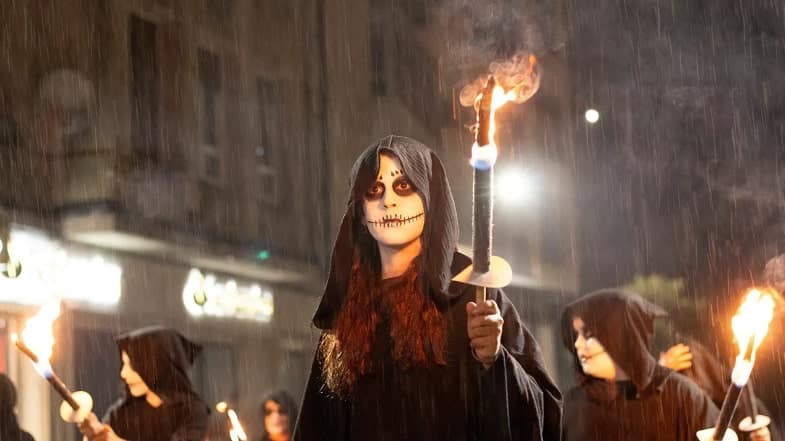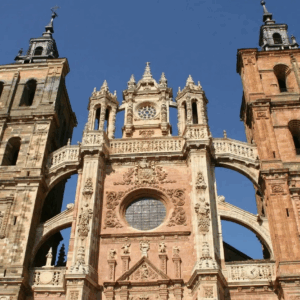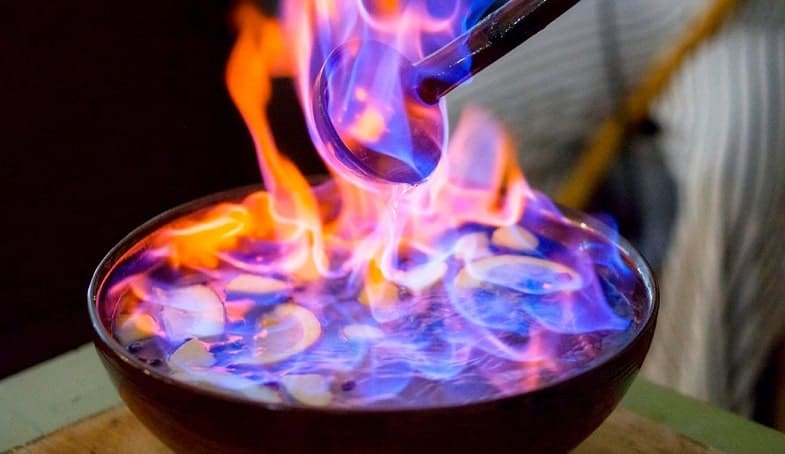The Meigas and the Queimada: Mysteries and Traditions of Galicia

Table of Contents
the Meigas and the Queimada
Galicia is known for its rich cultural heritage, green landscapes and ancient customs. Among its most fascinating and enigmatic traditions are the stories of the meigas and the queimada ceremony.
Both elements are pillars of Galician mythology and reflect the close connection between Galicians and their natural and supernatural environment.
Galicia Travels products
-

Rias Baixas Excursion
Rated 4.93 out of 530,00€ – 55,00€Price range: 30,00€ through 55,00€ Select date(s) This product has multiple variants. The options may be chosen on the product page -

French Way
360,00€ – 2.150,00€Price range: 360,00€ through 2.150,00€ Select options This product has multiple variants. The options may be chosen on the product page -
Sale!

Finisterre, Muxía, Costa da Morte
Rated 4.94 out of 520,00€ – 49,00€Price range: 20,00€ through 49,00€ Select date(s) This product has multiple variants. The options may be chosen on the product page -

Audioguide of the Cathedral of Santiago
Rated 5.00 out of 55,00€ Add to cart
The Meigas: Witches of Galicia
The meigas are central figures in Galician folklore. Unlike evil witches in other places, meigas in Galicia have a dual connotation: they can be both benign and evil.
The Galician saying “Eu non creo nas meigas, pero habelas hainas” (I don’t believe in meigas, but there are them, there are them) encapsulates the ambivalence with which these figures are perceived.
Origin and Types of Meigas
The origin of the meigas dates back to pre-Christian times, where Celtic and Roman beliefs were mixed. Friends can be divided into two main categories: good friends and bad friends.
Good meigas, also known as “healers” or “wise women,” are women who use their knowledge of herbs and nature to cure illnesses and help the community.
On the other hand, meigas malas, or “meigas chuchonas”, are associated with black magic and malevolent acts, such as hexes and spells.
Beliefs and Protection
In Galician culture, it is believed that meigas have supernatural powers and the ability to influence people’s destiny. To protect themselves from their bad intentions, the Galicians use various amulets and rituals, such as the “herbas de San Xoán” (herbs collected on the night of San Juan) and the famous queimada, an alcoholic drink that is consumed in a special ceremony to scare away evil spirits.
Read also: CATHEDRAL BEACH: DISCOVERING PARADISE

The Queimada: Purification Ritual
The queimada It is a traditional Galician drink made from brandy, sugar, lemon peels, coffee beans and, sometimes, additional herbs or fruits. However, what makes the queimada truly special is the ritual that accompanies it.
Preparation and Ceremony
The preparation of the queimada is an act loaded with symbolism. The drink is placed in a clay container and set on fire, causing a visual spectacle with blue and orange flames dancing over the liquid.
During this process, it is customary to recite the “Conxuro da Queimada“, a spell in Galician that invokes protection against meigas and other evil spirits. This spell is a mixture of ancient and modern words, which seek to purify the participants and the environment.
“… Mouchos, coruxas, sapos e bruxas. Demos, trasgos e diaños, espritos das neboadas veigas. Corvos, pintigas e meigas, feitiños das menciñeiras…”
Read also: WHAT TO SEE IN FINISTERRE
Cultural Significance
The ritual of the queimada It is not only a form of purification, but also a social event that strengthens community ties. People gather around the fire, sharing stories and reinforcing their cultural identity.
The queimada ceremony is a living testimony of how ancient traditions continue to have relevance in modern life in Galicia.
Connection between the Meigas and the Queimada
The meigas and the queimada They are intrinsically linked in Spanish culture. The queimada, with its purifying fire and protective spell, is a direct response to beliefs about the meigas and their influence.
This link highlights the duality of the Galician vision of the world, where the natural and the supernatural coexist and where ancestral traditions remain a vital part of daily life.
Conclusion
The meigas and the queimada are more than simple elements of Galician folklore; They are manifestations of a unique worldview that has endured throughout the centuries. In an increasingly globalized world, these traditions continue to be a reminder of the power of local culture and the rich heritage of Galicia and Spain. Thus, both the meigas and the queimada continue to enchant those who delve into the mysteries of this magical land.
Nowadays it is very easy to enjoy this traditional ritual, agencies like Galicia Travels prepare this famous good luck potion in Santiago for anyone interested, for any daring person who wants to try it. An opportunity worth not missing.
